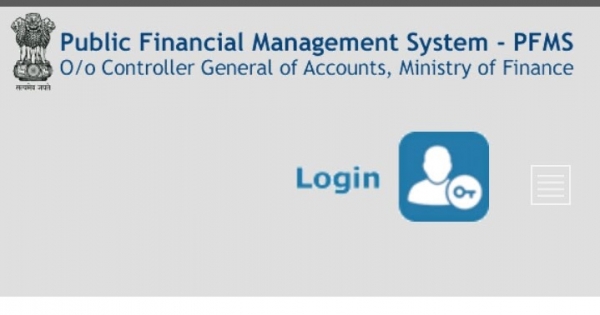PFMS - Public Financial Management System | All About PFMS
The common aim behind the use of PFMS is to give the users a common platform for e-payment of subsidy under direct benefit transfer (DBT) TO both the account us
- by Bhavya Das 2020-03-03 05:55:08
The word management has always connoted something that is arranged in its very well form. People say managing everything in life is easier than managing finance. But the PFMS which means the Public Finance Management system has given a new dimension of financial management which is backed up with technological innovations. The PFMS is earlier known as Central Plan Scheme Monitoring System. In common words, PFMS is used by government agencies to pay directly to the recipient’s bank account.
The common aim behind the use of PFMS is to give the users a common platform for e-payment of subsidy under direct benefit transfer (DBT) TO both the account users, that means Aadhar and Non-Aadhar based bank accounts through NPCI.
The use of PFMS has enabled the government in taking forward the DBT initiatives and the most important benefit is that it will target the beneficiary and prevent the leakages and duplication in the form of ghost beneficiaries too.
As PFMS is backed with e-payment systems so, the timely payment to the beneficiary can be ensured by the government end and of course, a delay can be prevented too.
As the timely transfer of the amount to the citizen can be done through PFMS, so it ensures efficiency, effectiveness, transparency, and accountability of the government system and process too.
If any customer is willing to check their PFMS account balance then they have to spare just a few minutes, they can give a missed call on a toll- free number 1800 180 2223 and tolled number 0120-2303090 to check the account balance through SMS. The service is free of costs and every PFMS account holder can reap the benefits from their nearest branch.
The PFMS system is established as a web-based system that helps the fund management and electronic transfer of funds to implementing agencies and beneficiaries. Many of the banks have implemented DBT payments through PFMS for the beneficiaries covered under the scheme.
According to the sources the budgetary outlay of the PFMS is 6,66, 644 Crore. The PFMS has the tremendous potential to improve financial management. It enables the just in time release of the fund, which reduces the float in the financial system. The time in release of funds also helps the government borrowings with a direct impact on interest cost.
The common advantage is that PFMS helps as an aid in tracking and monitoring the flow of funds to the implementing agencies. The transparency of the funds can be seen as one can know the actual status of the fund utilization by the multiple implementing agencies including central as well as the State government.
The primary objective behind the PFMS is to link the financial networks of Central and the State Government and the agencies of the State Government. The Controller General of Accounts (CGA) rolled out the PFMS. It can be traced back to 2009 when PFMS was started as the Central Sector Scheme of Planning Commission to track funds released under the Government of India.
In 2013, the scope of PFMS was expanded to cover direct payments to beneficiaries under different schemes. In the year 2014, the digitalization of the bank accounts was achieved through PFMS. The web-based software was developed and implemented by CGA.
The common benefits can be merged as it provides transparency related to the government borrowings, it can be said as a common platform to track the flow of funds. It ensures on-time money transfer including Direct Benefit Transfer. Through PFMS real-time monitoring and disbursements of funds is easier than before.
According to the sources PFMS is an addition to the progressive financial management of India and can be better understood as a comprehensive Payment, receipt and accounting system. The improved management of funds is achieved through PFMS. It is considered a meaningful management information system for various stakeholders. The Indian financial system supports real-time expenditure at all levels through PFMS.
Picture Source: Gyanorshiksha
Also Read: Jet Airways news: Jet airways latest news & Breaking headlines

POPULAR POSTS
Loan EMIs to Drop as RBI Slashes Repo Rate - Full MPC December 2025 Highlights
by Shan, 2025-12-05 11:49:44
Zoho Mail vs Gmail (2025): Which Email Platform Is Best for Businesses, Startups, and Students?
by Shan, 2025-10-09 12:17:26
PM Modi Launches GST Bachat Utsav: Lower Taxes, More Savings for Every Indian Household
by Shan, 2025-09-24 12:20:59
$100K H-1B Visa Fee Explained: Trump’s New Rule, Clarifications & Impact on Indian Tech Workers
by Shan, 2025-09-22 10:11:03
India-US Trade Deal Soon? Chief US Negotiator Arrives in Delhi as Talks Set to Begin Tomorrow
by Shan, 2025-09-15 11:54:28
Modi Meets Xi: Trump’s Tariffs, Strategic Autonomy, and the Future of Asia’s Power Balance
by Shan, 2025-09-03 06:40:06
Google Claims Gemini AI Uses Just ‘Five Drops of Water’ Per Prompt, Sparks Debate
by Shan, 2025-08-22 12:34:27
RECENTLY PUBLISHED

Pine Labs IPO 2025: Listing Date, Grey Market Premium, and Expert Outlook
- by Shan, 2025-11-05 09:57:07

The Agentic Revolution: Why Salesforce Is Betting Its Future on AI Agents
- by Shan, 2025-11-05 10:29:23

Top 10 Insurance Companies in India 2026: Life, Health, and General Insurance Leaders Explained
- by Shan, 2025-10-30 10:06:42

OpenAI Offers ChatGPT Go Free in India: What’s Behind This Big AI Giveaway?
- by Shan, 2025-10-28 12:19:11

Best Silver Investment Platforms for 2025: From CFDs to Digital Vaults Explained
- by Shan, 2025-10-23 12:22:46





 Subscribe now
Subscribe now 